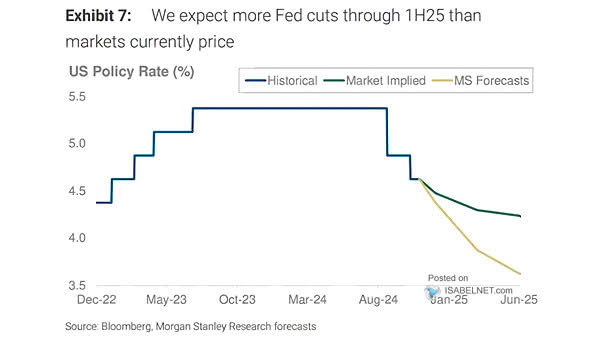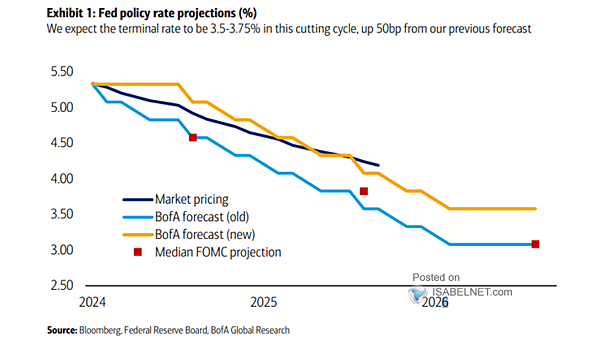Interest Rates – Expectations for the Fed’s Policy Rate Path
Interest Rates – Expectations for the Fed’s Policy Rate Path Nomura still expects 25 bp rate cuts in July and December 2024, as well as four additional 25 bp rate cuts in 2025. Image: Nomura


